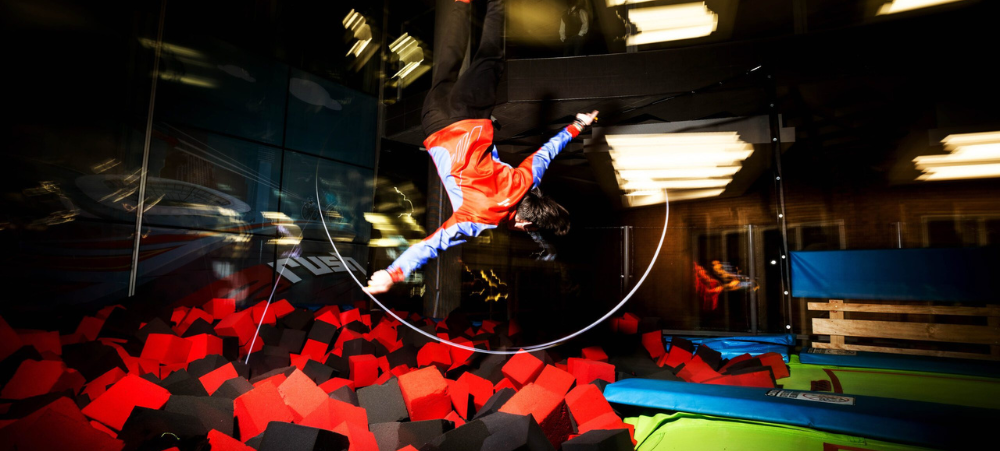Children’s safety advocacy organisation ChildSafe has offered guidance and support to keep children safe while the government’s stay-at-home regulations are still being enforced.
For many children, the reality of ‘staying at home’ means to be confined to just one or two rooms, often in small spaces. In many areas in South Africa, the typical house size is just 36sqm. In many instances the child will be sharing that space with other adults and children. Around 80% of child injuries in young children occur in or around the home, most frequently caused by hot water burns, swallowing poisonous substances and falling off beds, to name a few.
At Red Cross War Memorial Children’s Hospital alone in 2019, over 6500 children were treated for preventable injuries, with 880 treated for burns (715 fluid, 78% under 5 years); 2819 were treated for falls (366 fell of beds and 155 out of the arms of their attendants); 689 treated for poisoning and 94 for dog bites; 771 were treated for transport injuries of which 82% were young pedestrians. It is again estimated that an average of 50 young children died on the streets of Cape Town as pedestrians. Additionally, government data show that approximately 4000 children drown every year. During lockdown, it is likely that these injuries will increase with the challenge of being constrained for long periods in confined spaces.
ChildSafe’s Executive Director, Yolande Baker, explains: “Children are naturally curious and we encourage that curiosity. But when they are expected to be confined to home for long periods, they will be tempted to explore their home in ways that would put them at risk.”
“The current lockdown is challenging for everyone – especially when you have little space to move around, no easy access to water and sanitation. Under those conditions, the risk of injury is increased for children. That’s why it’s critical for adults to be fully aware of where their children are and what they’re doing at all times,” says Baker.
ChildSafe guidance reminds parents and care-givers of the sources of dangers in the home, and the risk of children suffering injury while on lockdown. These include:
- Burns, from liquids, open flames and chemicals
- Drowning, in swimming pools, but also in buckets, baths and puddles
- Choking on small objects, such as small toys, buttons, coins and small disc-shaped lithium batteries
- Poisoning, especially from hand sanitizer and disinfectant gels, which will be more accessible during the COVID19 crisis
- Electrocution, from unsecured electrical connections
- Falls, for example, down stairs, from bunkbeds and in the yard
“Now, more than ever, it’s important that adults are very aware of what the children under their care are doing, even in a familiar environment. Many parents and care-givers will continue to be working from home, which diverts attention even more during the day. While we understand how difficult it is for parents to look after children and work at the same time, we urge adults to be extra vigilant during this period,” continues Baker.
Medical teams are on alert to support those who contract the coronavirus, so ChildSafe has offered some basic guidance for some of the more common home injuries. The ChildSafe website contains more detailed information. ChildSafe has also provided a list of emergency numbers in case of injury in the home.
Basic emergency actions if a child is injured. Always seek medical attention as soon as possible after the incident occurs.
Burns
- If clothing catches fire: drop and roll on the floor
- Escape from thick smoke: crawl on the floor.
- Minor burns: run the affected area under cold water until the pain disappears.
- Deep white burns: do not apply anything to burnt areas. Cover with a dry, clean sheet and seek medical attention immediately.
- Chemical skin burns: Wash under fast flowing water.
Drowning
- Teach children not to pretend they’re in trouble in the water when they’re not.
- Don’t let other children jump in the water to help others.
- If you must go into the water, take something for the child to hold on to rather than letting them hold on to you.
- Do child CPR if the child is not breathing or has no heartbeat.
- Always take a child for medical observation after a near-drowning incident.
Choking
- If a child appears to be choking, don’t panic. The normal cough reflex will generally expel the object.
- If the child is small, hold them up by the heels and give them a firm slap on the back. If this is not successful, immediately seek medical help from a doctor, clinic or hospital.
- Do not slap the child hard on the back while they are sitting up. This may make the child gasp and suck the object further into the air passage.
- Do not try to remove the object with your fingers. This will only push it further down.
- If an older child is choking, stand behind him or her. Put your arms around their waist. Find the spot in the chest halfway between the waist and lower ribs. Press gently with a fist and clasp the other hand over the fist to give short, sharp “hugs” pushing inwards and upwards as far as possible. Repeat if necessary until air pressure pops up the blocking object.
- If a child has swallowed an object or pushed objects into their ears or nose, seek medical help as soon as possible.
- If a child develops a chronic cough or wheeze, they may have something in their air passage. Seek medical help immediately.
- If a child can’t breathe spontaneously after the object is removed, apply mouth-to-mouth resuscitation and seek medical attention.
Poisoning
- Different poisons require different immediate treatment. Check the ChildSafe website for more detailed guidance. Do not make the child vomit. Seek medical help immediately. Contact the Poison Information Centre at 0861 555 777
Electrocution
- Switch off the electricity before you touch the child.
- Move the child to safety using protection a wooden plank or something similar which doesn’t conduct electricity. Do not use metal objects as you may electrocute yourself.
- If the child is not breathing and has no pulse, apply mouth-to-mouth resuscitation.
- If there is a burn, cover the burn area with a clean, non-stick dressing. Seek medical help immediately.
Falls
- Babies are especially vulnerable to falling from heights. Do not leave a baby alone on changing tables, beds, sofas or chairs.
- Always keep cot sides up.
- Place the baby in a safe place when they cannot be held, for example, in a cot, playpen, on the floor, on a cushion, etc.
- Babies usually start crawling at six months. Always use safety gates on stairways.
- Try to avoid using a baby walker, unless the child will be constantly supervised.
Yolande Baker is the Executive Director at Childsafe
- Preventing Dog Bites in Children - September 20, 2023
- Preventing Electrical Burns - September 19, 2023
- Back to school Safety - January 21, 2022





